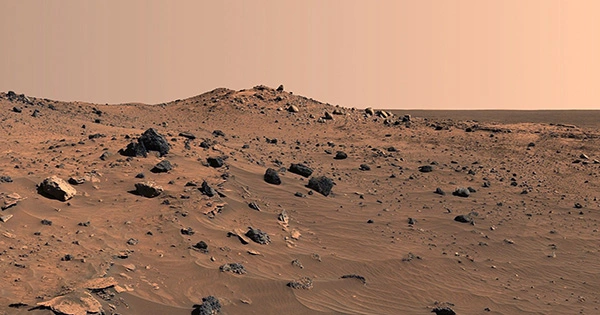On its journey across Mars, NASA’s Perseverance rover has discovered something amazing. A robotic Mars resident has never discovered its own parachute before. For almost a year, Perseverance has been exploring Mars’ Jezero Crater in search of fascinating rock formations to drill into and gather samples of to bring back to Earth. It has recently started retracing its tracks in order to reach the location it was meant to examine, an ancient river delta that transported water into the crater billions of years ago.
Perseverance has done a lot of autonomous driving on the way to the delta (without human help). It has travelled through familiar areas and even caused a minor collision (the first one beyond Earth). It has now identified the parachute that slowed its descent into Mars. The ‘chute was initially detected in raw photos taken on April 6 by a keen-eyed engineer.
Kevin M Gill, a Martian engineer and photographer, analysed the photographs that proved the parachute. They were shot on Sol 403 and 404 (a sol is a Martian day) during Perseverance’s mission on Mars. Many people were ecstatic when the parachute was dropped. A secret message was hidden in the red and white design. The message was decrypted as “Dare tremendous things” by internet sleuths. The statement is imprinted across the walls of NASA’s Jet Propulsion Laboratory’s mission control room and is used as a slogan by NASA’s Jet Propulsion Laboratory, which is in charge of the Mars rover project.
On February 19, 2021, the day after arrival on Mars, the rover – or the Twitter incarnation of it – declared it. Perseverance, which just set a new distance record for a Mars rover, has undoubtedly daring great things and is now on its way to its ultimate destination.
The landing site for NASA’s Perseverance rover within Jezero Crater is depicted on this interactive map. Perseverance touched down on February 18, 2021. The position of the Mars Helicopter is also shown on the map. To examine the current position and traverse path for the Mars Perseverance rover at Jezero Crater, scroll and pan around this map. The mission’s purpose is to look for evidence of ancient life and gather rock and regolith (broken rock and dust) samples for possible return to Earth.
This map has two layers: a high-resolution color map of the initial investigation area inside Jezero Crater and a true-color Northeast Syrtis regional map. Photos from NASA’s Mars Reconnaissance Orbiter’s HiRISE camera were used to construct the high-resolution base map, while images from the European Space Agency’s Mars Express High Resolution Stereo camera were used to create the wider color base map (the original image can be found here).
Both maps have had some color processing applied to them in order to emphasize surface characteristics. The photos were used to construct a high-resolution Digital Elevation Model, which provides crucial information for rover drivers who need to know how steep the slopes are while planning a way ahead through this rocky terrain. Engineers developed the software that the mission team uses to select where Perseverance will investigate and how it will get there. Each dot marks the conclusion of a drive and is tagged with the day, or sol, when the rover came to a halt on Mars.















